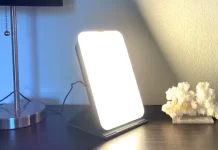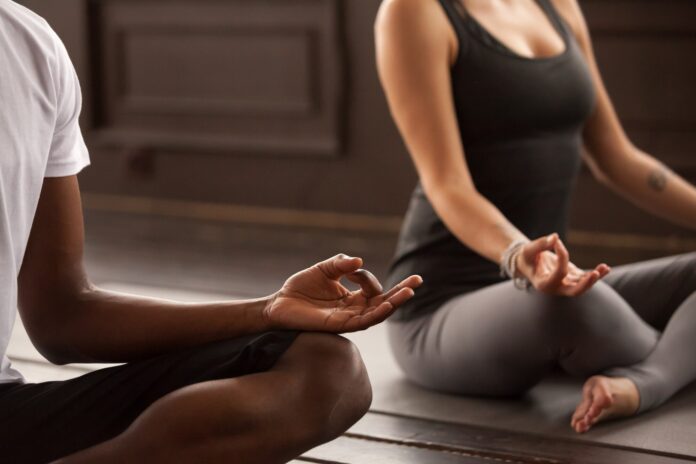Progressive Muscle Relaxation is a two-step method that teaches you how to relax your muscles.
You start by methodically tensing specific body muscles, including your shoulders and neck. After that, you let go of the tension and experienced the sensation of your muscles relaxing. You may relax when you’re feeling nervous by using this exercise, which will also help you reduce your general levels of tension and stress.
It can also help you sleep better and lessen physical issues like headaches and stomachaches, and it can be used alongside meditation and mindfulness for even better results.
Individuals who struggle with anxiety are frequently so tight all day that they are unable to even identify the sensation of relaxation. With practice, you can become adept at telling the difference between the sensations of a fully relaxed muscle and a tensed muscle.
After that, you can start to “cue” yourself into this calm condition as soon as you notice any tenseness in your muscles that goes along with your anxious feelings. You can learn how to relax and identify when you are becoming tense during the day by tensing and releasing.
Find out more ways you can relax for free on your own time.
Useful tips for Progressive Relaxation
- Allocate roughly 15 minutes to finish your progressive relaxation activity.
- Look for somewhere quiet where you can finish this exercise.
- Practice this exercise twice a day for the first week or two until you start to get the feel of it. When you truly need it, the relaxation response will “kick in” more quickly the more proficient you are at it.
- It is not necessary to have anxiety in order to perform this activity. Actually, it is preferable to practice it in a peaceful environment first. In this manner, it will be simpler to accomplish when nervous.
Getting ready for Progressive Relaxation
Locate a peaceful, cozy spot to sit, close your eyes, and relax your body. The perfect chair is a reclining one. You may lie down, but doing so will make it more likely that you will nod off. The purpose of this practice is to teach you how to relax while you’re awake, even though doing so before bed will help you sleep better. Don loose, comfy attire, and remember to take off your shoes. Before you start, take around five calm, deep breaths.
Guidelines for Progressive Relaxation
The Tension-Relaxation Response
Step 1: Tension
Applying muscle tension to a particular body portion is the initial stage. Whichever muscle group you are targeting, this process is basically the same. Start by concentrating on the targeted muscle group, such as your left hand.
After that, inhale slowly and deeply, then squeeze your muscles as hard as you can for roughly five seconds. It’s crucial to feel the muscles’ tenseness, which could possibly make you shaky or feel a little uncomfortable. Your left hand would be making a tight fist in this situation.
Try to olny contract the muscles you are targeting because it is easy to inadvertently tense other nearby muscles (such the arm or shoulder). With repetition, separating muscle groups becomes simpler.
Step 2: Relaxing Tense Muscles
In this stage, the stiff muscles must be quickly relaxed. Allow all of the tension to release from the tense muscles after approximately five seconds. This stage requires you to exhale.
As the tension releases, you should feel the muscles becoming limp and relaxed. It’s critical to pay close attention to and distinguish between the states of tension and relaxation. The most crucial aspect of the entire exercise is this.
Take note: It may take some practice to understand how to let go of tension in the body and distinguish between it and relaxation. Paying attention to your body could be unsettling at first, but it can eventually grow to be really pleasurable.
After spending roughly 15 seconds in this relaxed state, go on to the next muscle group. Replicate the steps for tension relaxation. Once every muscle group has been worked, savor the profound sense of calm for a while.
THE VARIOUS MUSCULAR GROUPS
Nearly all of your body’s major muscle groups will be used during the gradual relaxation practice. Start from your feet and work your way up gradually to make it easier to recall. If you’d prefer, you may also do it in the opposite direction, working your way up from your forehead to your feet. For instance:
- Foot (curl toes downward)
- Lower leg and foot (draw your toes in toward you by tightening your calf muscle)
- Whole leg (when performing the above, tense your thigh muscles)
(Repeat same process above on opposite side of body.)
- Your hand (clench and make a fist)
- Whole right arm; while clenching your fist, tighten your biceps by bringing your forearm up towards your shoulder and “making a muscle.”
(Repeat same process above on opposite side of body.)
- Buttocks (draw your buttocks together to tighten)
- Stomach (suck in your stomach).
- Chest (tighten by inhaling deeply)
- Shoulders and neck (lift your shoulders to your ears)
- Mouth (open your mouth wide to extend your jaw’s hinges)
- Eyes (tightly close your eyelids)
- Forehead (lift your brows as high as you can)
TENSE UP FAST AND RELAX
You can start practicing a very brief kind of progressive muscle relaxation after you have gotten comfortable with the “tension and relaxation” approach and have been using it for a few weeks. This method teaches you how to tighten even bigger muscle groups in even less time.
These skeletal muscles are:
- Lower limbs (feet and legs)
- Stomach and chest
- Arms, shoulders, and neck
- Face
So, you can concentrate on the entire group (your chest and stomach) rather than just one particular muscle area at a time, like your stomach.
To begin, try paying attention to your breathing both during the tense and relaxed moments. Saying a specific word or phrase to oneself as you slowly exhale can be useful when performing this condensed version (e.g., “relax”, “let go”, “stay calm”, “peace”, “it will pass”).
Saying this word by itself will gradually induce a peaceful feeling since it will come to be connected with a relaxed condition. When it would be difficult to take the time to complete every phase of progressive muscle relaxation, this can come in handy.
RELEASING
Acquiring proficiency in the “release only” technique might help you reduce the amount of time it takes to relax your muscles even more. Learning to distinguish between the sensations of tense and relaxed muscles is one advantage of tensing and releasing your muscles.
You may begin practicing “release only,” which entails taking out the “tension” portion of the exercise, once you are at ease with the tension and relaxation techniques. For instance, consider just relaxing the muscles rather than tensing your chest and stomach and then relaxing them. With practice, the release-only technique can be just as calming as tensing the muscles beforehand, even if the first sensation of relaxation may be less powerful.






























